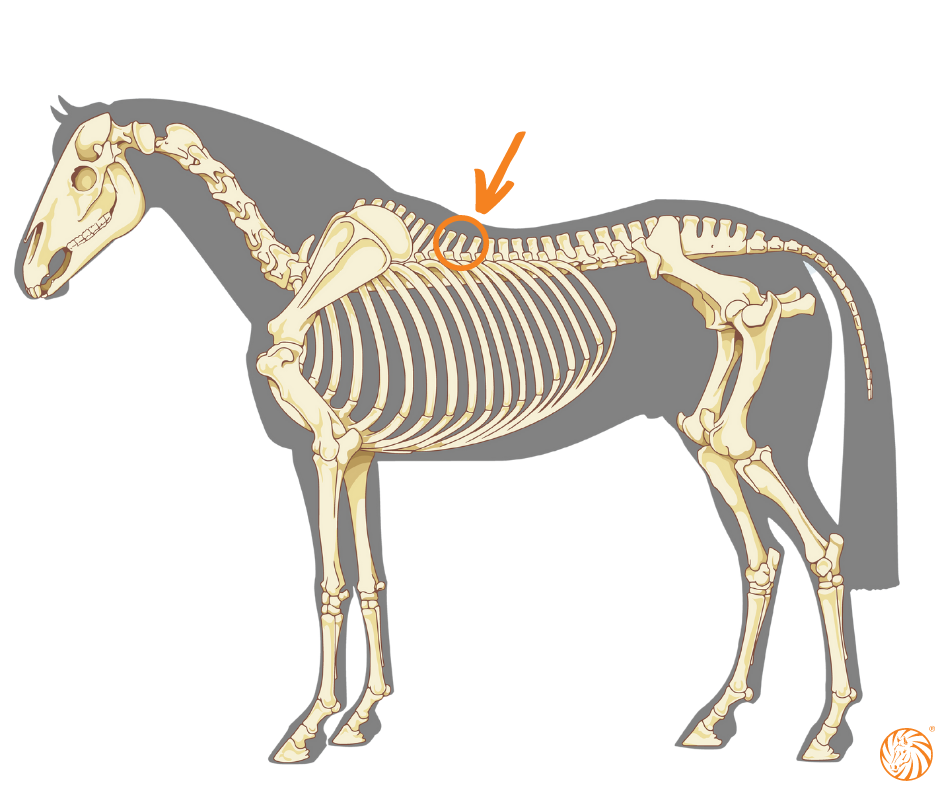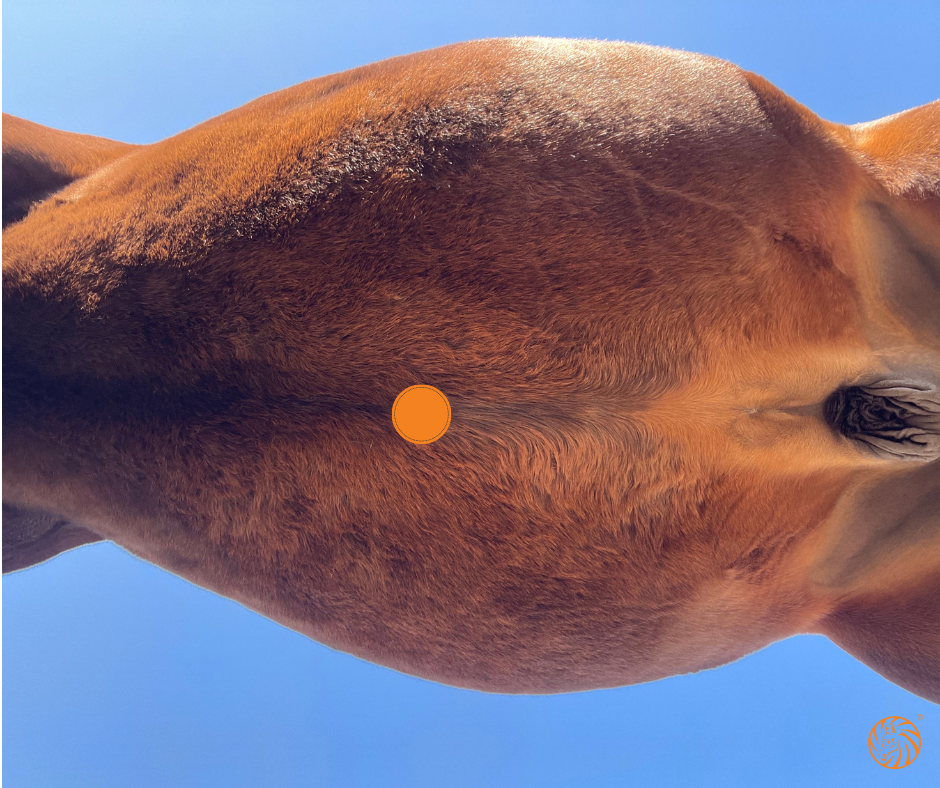The keyword in combating Equine Gastric Ulcers is prevention
4 min. read time
Audio version – listen to this article easily
Disclaimer: The following text has been translated from German. It is important to note that if you have any inquiries regarding the feeding of your horse, it is always recommended to consult your veterinarian first.
Tanja Prüll, based in Hesse (Germany), is a veterinary practitioner, equine and canine physiotherapist (DIPO), animal acupuncturist, DIPO-certified saddle expert and steward eventing (FEI Level 2). Horses with stomach problems are no longer a rarity in her everyday life. In an interview with Equine 74, she talks about her experiences in everyday practice, how abdominal pain manifests itself in horses and how bioresonance can help to identify the cause.
Tanja Prüll: "Horses usually suffer in silence. The owner needs to be very observant. Girth tightening or sensitivity in the abdominal region are typical signs of abdominal pain. The fact that the horses are in constant pain due to the stomach ulcer not only causes the abdominal muscles to tense up, but also increases the muscle tone of the entire body. The horses are tense from front to back."
You can't find the cause of the tension straight away. These are usually the horses that seem unridable or lazy. That's obvious, of course, the horses don't like to move at all. Horses are usually more sensitive on the left side of the body than on the right, as the stomach is centred on the left. This results in extreme handedness when riding. Horses walk much better on the right hand because the stomach has enough room there. On the left side, the stomach is constricted in movement and causes the horse pain. The leg is less accepted or the horses show resistance to the leg, and the horses also have problems bending.
Prevention is always better and cheaper than therapy.
The nerve supply to the organs originates in the intervertebral discs of the thoracic spine. The nerve supply to the stomach can also repeatedly lead to blockages in the area of this supply. The focus here is on the 11th, 12th and 13th thoracic vertebrae, which lie just behind the withers, close to the centre of gravity of the saddle.

This is also the reason why horses with an acute gastric ulcer should not be ridden. The horses hold on to their backs, can't swing and are unable to carry the rider at that moment.
There is also the possibility that it is the other way round. As always, the question is: hen or egg - which came first? There is also the variant that a chronically crooked rider, a poorly fitted saddle or other disruptive factors in the area of the thoracic vertebrae 11 to 13 can trigger stomach problems. Chronic pain triggers stress, which in turn can lead to irritation of the stomach lining.
Tanja Prüll: "In Traditional Chinese Medicine (TCM), there is a stomach alarm point, which is located on the ventral midline, on the midline of the abdomen. In the centre between the end of the breastbone and the navel. This point is very sensitive for stomach pain."

There is also the stomach Shu point, the so-called connecting point, which is located at the level of the 12th spinous process of the thoracic spine, to the side of the spine on the long back muscle. It can also be sensitive or altered. Altered means that conspicuously blocked sebaceous glands develop at this point or that there is a dent in the musculature. As a horse owner, you should always ask a specialist, be it a vet or a physiotherapist, to show you massage techniques and pressure points.
Tanja Prüll: "If I suspect that the stomach is playing a role in the problem, the quickest way to help is with acupuncture. I'm very happy to do this, but I also like to use laser therapy or matrix rhythm therapy. But the most important thing is to eliminate the cause. That's why the first thing I check is the feeding and other stress factors."
This should be avoided at all costs. Otherwise, there is a centre line on the belly, the so-called conception vessel, on which the stomach alarm point is also located and which can also be worked on well."
There is also the stomach meridian itself, which ends at the centre front of the hind hoof at the coronet band. Of course, a few points can also be used around the knee. There are some important points around the knee in particular, although you have to be careful if you have any suspicions, as this should really only be done by a specialist.
Tanja Prüll: "The most important thing is species-appropriate husbandry and feeding. Stress is also a very important trigger, and all it takes is an unsympathetic stable neighbour or suboptimal herd composition, too much training, an unsympathetic stable employee who doesn't treat the horses well, too little exercise or boredom."
There are so many factors in everyday stable life that cause stress for the horse, which are not the exception but the rule.
According to Tanja Prüll, this is how horse owners can prevent gastric mucosal irritation:

Tanja Prüll: "This is a very important topic! Many riders think they have to tighten the bridle strap so that the horse can't open its mouth. But it is essential that the horse can chew while riding. If we humans clench our teeth and jog, it's not a nice feeling, but it's similar for the horse."
All fasciae in the body originate at the temporomandibular joint. This means that if the temporomandibular joint and the surrounding muscles are tense, this tension will spread to the whole body. As riders, we shouldn't be surprised that the horses don't walk relaxed and swing nicely over their backs. The problem is really homemade. Stomach acid is continuously produced when riding, so saliva is absolutely essential as a natural buffer to prevent irritation of the stomach lining.
Tanja Prüll: "Bioresonance is a biophysical method that comes from quantum physics and uses vibrations to measure the body's resonance. Every organ, every structure in the body has its own vibration and every pathological change, every pathogen, also has its own vibration pattern.
Bioresonance is used for testing: Where are there disturbances in the physiological vibration pattern? Which pathological vibration patterns are present?"
Tanja Prüll: "The purpose of bioresonance is to be able to say: There is a problem here, further diagnostics are needed. The advantage of bioresonance is that problems can be recognised at an early stage, at a time when other forms of diagnostics are not yet effective. Bioresonance is particularly useful for horses with unclear symptoms."
The causes of stomach ulcers in horses, e.g. feed intolerances, can also be investigated using bioresonance. It is often easier for owners to adjust the feed if they really have an intolerance in black and white.
Tanja Prüll: "I am always interested in new and, above all, natural feed supplements for horses. When I discover something exciting in the trade press, I always look at the composition first. I particularly like the composition of Equine 74 Stomach Calm Relax."
I was completely convinced by the positive reports from my customer Hanne Brenner. Another customer, from the eventing sector, told me that she gives her horses Equine 74 Gastric for the entire show season and since then they have had no more problems with stomach irritation or stomach pain and the horses get through the season in top condition. These two reports have finally convinced me, so that I regularly recommend both products to my customers.
On our topic page, you will find a wealth of additional information and links regarding gastric ulcers in horses. We also discuss the various methods of preventing gastric ulcers in horses.
Gastric Ulcers in Horses - An introduction to the key facts and information on the symptoms, causes, and prevention of gastric ulcers in horses.
Equine 74 Gastric
Buffers the excess acid in the horse's stomach instead of blocking it.
Equine 74 Stomach Calm Relax
Supports the nervous horse stomach in stressful situations.